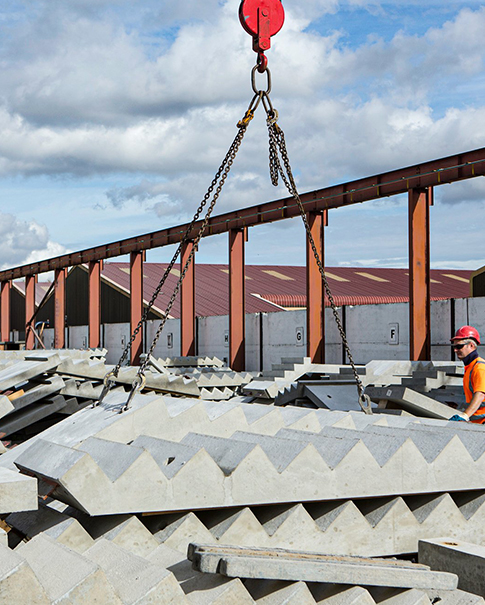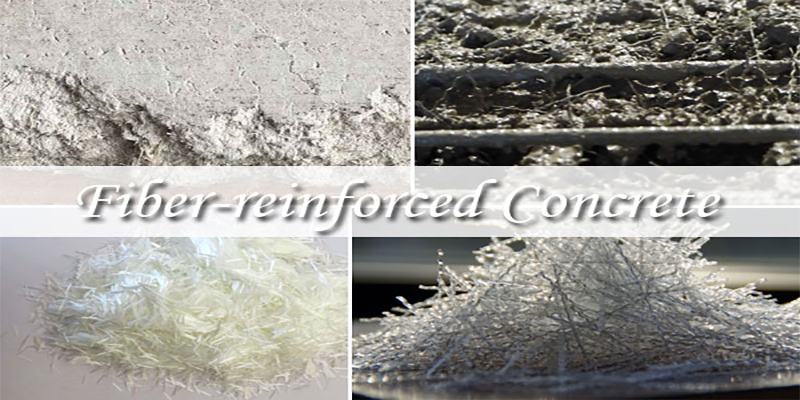-

Envoyez-nous un courriel
sale@lscmagnetics.com -

Numéro de contact
+86 -13559234186

Envoyez-nous un courriel
sale@lscmagnetics.com
Numéro de contact
+86 -13559234186
Fibre de carbone : l'arme secrète qui rend le béton préfabriqué aussi solide, léger et résistant que les Transformers
Jul 28, 2025Alors que la vague de préfabrication déferle sur le monde, la « résistance excessive et la ténacité insuffisante » des composants en béton préfabriqué (PC) a toujours été un point sensible dans l'industrie. L'émergence de fibre de carbone, le « magicien noir », fait évoluer poutres, plaques et colonnes de « requins fragiles » à « hommes de fer sismiques ».
Point sensible : pourquoi les composants PC traditionnels ne peuvent-ils pas « tenir le coup » ?
Rupture fragile : le béton ordinaire résiste à la compression mais pas à la tension, et il se brise facilement instantanément lorsqu'il est plié ou soumis à un impact.
Corrosion des barres d'acier : l'érosion par les ions chlorure dans les zones côtières ou dans les usines chimiques a entraîné une augmentation des « blessures internes » des barres d'acier traditionnelles.
Manilles de poids : Augmenter la section transversale pour augmenter la capacité portante augmentera les coûts de transport et de levage.
La réparation post-séisme est difficile : une fois la zone du nœud fissurée, le cycle de réparation par voie humide sur site est long, ce qui retarde la reprise des travaux.

Quatre rôles perturbateurs de la fibre de carbone
Ajout interne de « fibres courtes » - « reconstruction ligamentaire » pour béton
• Mécanisme : L'ajout de 0,2 à 0,8 % en volume de fibres de carbone raccourcies forme un support tridimensionnel aléatoire dans la matrice. En cas de fissures, la fibre se « ponte » pour transférer les contraintes, ce qui multiplie par 2 à 4 la résistance aux chocs.
• Scénario : Escaliers préfabriqués, segments de tuyaux de métro, garde-corps anti-collision et autres composants devant être résistants aux chocs.
• Données : Les poutres préfabriquées avec 0,4 % de fibres de carbone ajoutées présentent une réduction de 35 % de la déflexion à mi-portée et une réduction de 50 % de la largeur des fissures lors du test de marteau-pilon.
« Tissu CFRP » externe - « blindage invisible » avec une résistance 10 fois supérieure à celle des barres d'acier
• Mécanisme : un tissu CFRP avec une résistance à la traction ≥ 3000 MPa est collé à la surface de traction du composant avec de la colle époxy pour former un système de force secondaire, qui peut augmenter la capacité de charge en flexion de 30 à 50 % sans augmenter la section transversale.
• Scénarios :
– Renforcement rapide d’anciennes dalles creuses préfabriquées ;
– Amélioration parasismique des ponts préfabriqués (par exemple, tissu CFRP enroulé autour de la zone de charnière en plastique des piliers).
• Cas : Après que deux couches de tissu CFRP ont été fixées au bas de la poutre-caisson préfabriquée d'un certain viaduc, la capacité portante ultime a été restaurée à 1,45 fois la conception d'origine.
« Barres/grilles en PRFC » préfabriquées – des « barres en acier super » qui ne rouillent jamais
• Mécanisme : L'utilisation de barres CFRP pour remplacer les barres d'acier traditionnelles a une densité de seulement 1/5 de celle de l'acier, mais une résistance à la traction 10 fois supérieure à celle de l'acier et est résistante à la corrosion par les ions chlorure.
• Scénarios :
– Panneaux muraux extérieurs préfabriqués pour quais côtiers et réservoirs de stockage de GNL ;
– Panneaux de pont préfabriqués qui doivent être protégés de la corrosion saline dans les zones froides de haute altitude.
• Économique : Le coût du cycle de vie complet est réduit de 30 %, éliminant ainsi le besoin d’un revêtement anticorrosion ultérieur.
« Couche de perception » intelligente : laissez les composants effectuer leur propre « bilan de santé »
• Mécanisme : Les fibres de carbone courtes uniformément dispersées font que la résistivité du béton change linéairement avec la déformation, réalisant ainsi un autodiagnostic des fissures.
• Scénarios :
– Couloirs de canalisations préfabriqués intégrés, suivi en temps réel des tassements ;
– Panneaux muraux extérieurs de bâtiments préfabriqués, évaluation rapide des niveaux de dommages après un tremblement de terre.
Dans quelle mesure la durabilité des composants préfabriqués a-t-elle été améliorée après avoir été « blindés » avec de la fibre de carbone ? Nous disposons de données comparatives évidentes, qui se reflètent principalement dans deux aspects :
1. Indicateurs quantitatifs de durabilité améliorée
Largeur de fissure : après le renforcement en tissu CFRP, le taux d'expansion des fissures a diminué de 60 à 75 % ; après 120 cycles sec-humide, le facteur d'intensité de contrainte à la pointe de la fissure a diminué de 50 %.
Corrosion des barres d'armature : après que les barres/grilles en PRFC ont remplacé les barres d'acier, le coefficient de perméabilité aux ions chlorure a diminué d'un ordre de grandeur et le taux de corrosion des barres d'acier a été <0,01 mm/an.
Cycle de gel-dégel : après 300 essais de gel-dégel rapides (FT), le taux de rétention de la résistance de liaison de l'interface CFRP-béton était ≥ 85 %, tandis que les échantillons non renforcés n'en avaient que 50 %.
Vieillissement ultraviolet : après une irradiation continue avec une lampe UV-A 340 nm pendant 1 000 h, l’atténuation de la résistance à la traction du tissu CFRP était <5%, ce qui est bien mieux que l'atténuation de 20% des barres d'acier revêtues d'époxy.
2. Adaptabilité environnementale : Performance dans des conditions de travail extrêmes
Température élevée et humidité élevée (40 ℃, HR 95%)
Après 3000 h, la résistance au cisaillement de l'interface CFRP-béton a diminué de <8 %, répondant aux exigences équivalentes à 30 ans de la norme JTG/T J22-2011 pour les environnements chauds et humides.
Brouillard salin + cycle sec-humide (NaCl 5 %, 120 cycles)
La résistance de liaison du béton armé traditionnel a diminué de 50 %, tandis que l'échantillon renforcé en PRFC n'a diminué que de 12 %.
Gel-dégel + sel de déneigement (-18 ℃↗+5 ℃, 300 cycles)
La charge ultime de l'échantillon de tissu CFRP a diminué de <10%, tandis que celle du béton ordinaire a diminué de 35%.
La fibre de carbone n'est donc pas simplement une « barre d'acier plus coûteuse », mais la clé de l'évolution du béton préfabriqué, passant d'une « portance passive » à une « détection active ». Celui qui maîtrisera cette clé sera le premier à ouvrir un océan bleu à forte valeur ajoutée dans l'océan rouge des bâtiments préfabriqués.